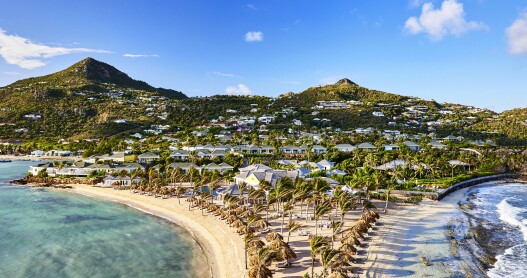Overview
How to get around The Bahamas
All visitors must possess a valid passport and proof of onward or return travel. Lynden Pindling International Airport in Nassau is the main air hub, with service to many other islands. Abacos has two small international airports with U.S. connections. Private and public ferry services are available between most major islands.
Major airlines connect the United States with the Bahamas, and if you plan to stay in Nassau, Paradise island, or Freeport, your journey is a simple one. If you plan on reaching one of the Out Islands, options are more varied—and more exciting. You can charter a plane or speedboat, or secure passage on a mail or delivery ship, like an adventurer of old. More than a dozen Bahamian islands are served by U.S. airlines and Bahamasair; reaching the Exumas, Eleuthera, and the Abacos is a straightforward affair. Car rental isn’t a necessity in the Bahamas; both Nassau and Freeport have solid taxi and transportation networks, while many of the roads on the Out Islands are in such poor condition that driving isn’t worth the effort. Car rental is also exceptionally expensive, even by Caribbean standards. One exception is Grand Bahama Island; driving here is simple and straightforward. Remember that in the Bahamas you drive on the left. Hitching a ride on one of the 19 “Post Office Navy” ships isn’t as common as it once was, though all 30 inhabited Bahamian islands are still serviced. Boats leave from Potter’s Cay and Prince George Wharf each morning, with voyages that can last from 5 to 12 hours, depending on your final destination. Prices are cheap, but accommodations are sometimes rough (depending on the boat). Conversely, seeing the islands by charter boat is a remarkable experience, and comes with a remarkable price tag. Charter companies operate on all of the major islands.
Culture in The Bahamas
The culture of the Bahamas is characterized by African, Caribbean, European, and American influences, while the Out Islands have developed their own traditions, folklore, and arts. Music is generally considered one of the nation’s most important cultural exports, with acts like the Baha Men enjoying global appeal. The traditional music scene, including local styles like rake and scrape, soca, and the ever-popular calypso, serve as a wonderful introduction to Bahamian culture. The Bahamas have more churches per capita than any other nation on earth, and religious capital is important. Folklore and oral traditions have enjoyed something of a revival in recent years, while the islands have long been known for tremendous arts and crafts.
There’s such a thing as too much sun and surf (especially if you forgot your sunblock), even in an island paradise like the Bahamas. Fortunately, there’s plenty to enjoy on solid ground. The islands have a history of hosting tremendous Caribbean carnivals that last for a month and take over city streets. The best known is the Junkanoo celebration on Boxing Day, a celebration of folk art with roots that date back to the 16th century. The largest Junkanoo street festival takes place annually in Nassau. The Fox Hill Day Freedom Festival is held on the second weekend in August and includes the important Emancipation Day Memorial Service. The three-day Andros Crab Festival runs the first week of June at Fresh Creek, while the Bahamas International Film Festival is held every December. The Eleuthera Pineapple Festival, first held in Gregory Town in 1988, now welcomes more than 5,000 visitors to the islands during the first week of June. The Coconut Festival is held around the same time.
Food and drink to try in The Bahamas
Gastronomic bliss in the Bahamas begins and ends with the mighty conch, pronounced conk. Conch is traditionally served fried (known as cracked conch) or raw with a side of rice and peas. Bahamian cuisine is notable for an abundant use of fish and shellfish. Lobster, crab, grouper, and bonefish are particularly popular, while goat remains a common livestock staple. Bahamian food traditions are influenced by the American South, so it’s common to find grits, split peas, and pudding served as sides.
Beaches
How you spend your time on the beach depends mainly on how much time you have. Pack a few books and unroll your towel by the pool at one of Paradise Island’s world-class beach resorts. If you’d prefer to ride on the water, climb aboard a sailing catamaran with a Flying Cloud Catamaran Cruise. Snorkel around Nassau’s shallow coral reefs, scuba dive the world’s third largest barrier reef with an Andros Barrier Reef Expedition, or mount a Scenic Underwater Bubble—like a cross between motorcycling and scuba diving—for a truly unique glimpse into the Bahamian water world. Of course, anyone would understand if you simply basked all day on Tahiti Beach where rum cocktails, bright skies, and relaxed sunbathers reign.
Guide Editor
Flash Parker is currently studying to become a wilderness survival expert in the same tradition as Paul Bunyan, though his beard has yet to mature, and blue ox are less common than they once were. Flash moonlights as a writer, photographer, and photojournalist. His work has been published by AFAR, Lonely Planet, Conde Nast, Canadian Living, USA Today, Get Lost Magazine, GQ Magazine, Asian Geographic, Escape Magazine, American Cowboy and more.










